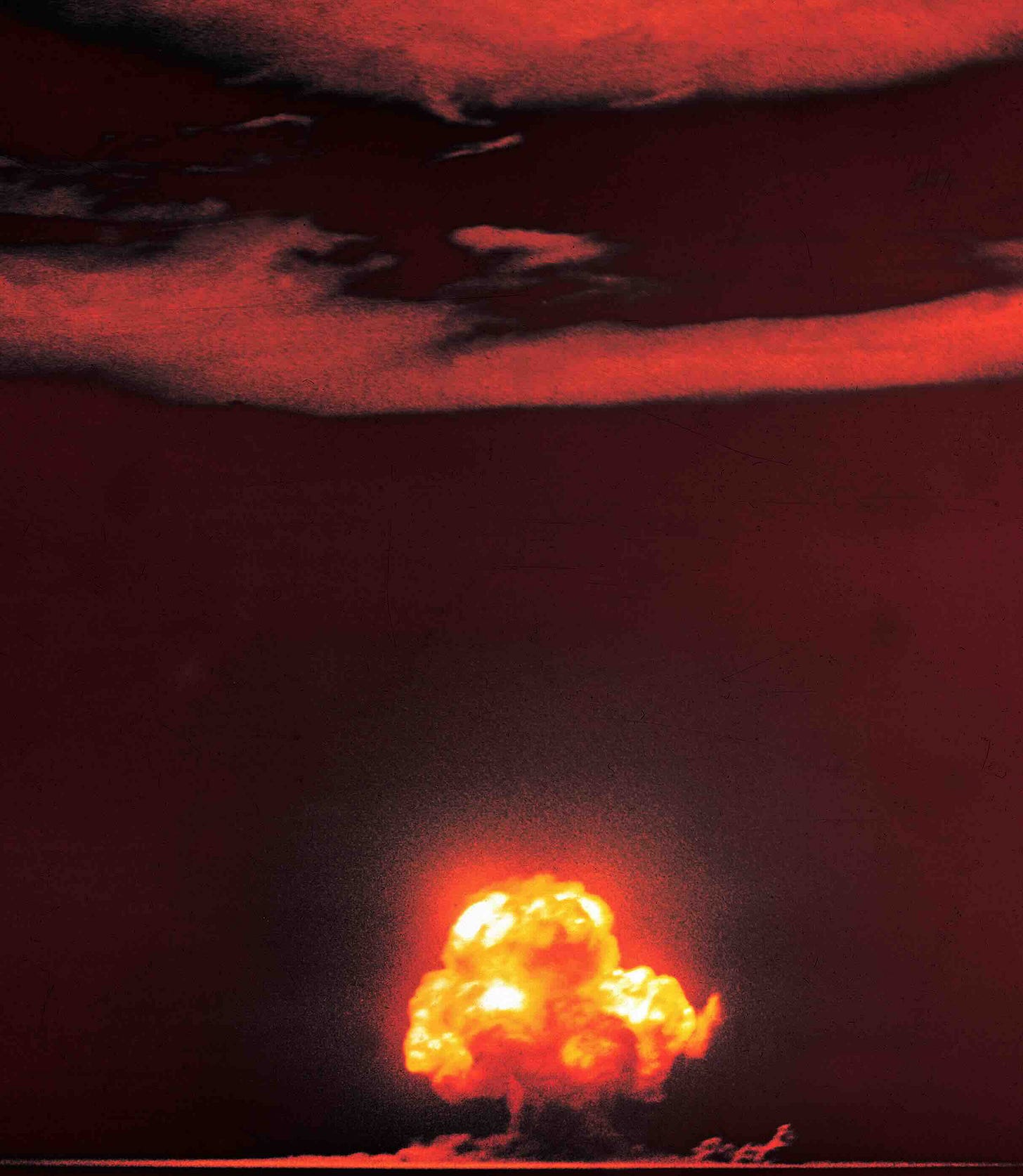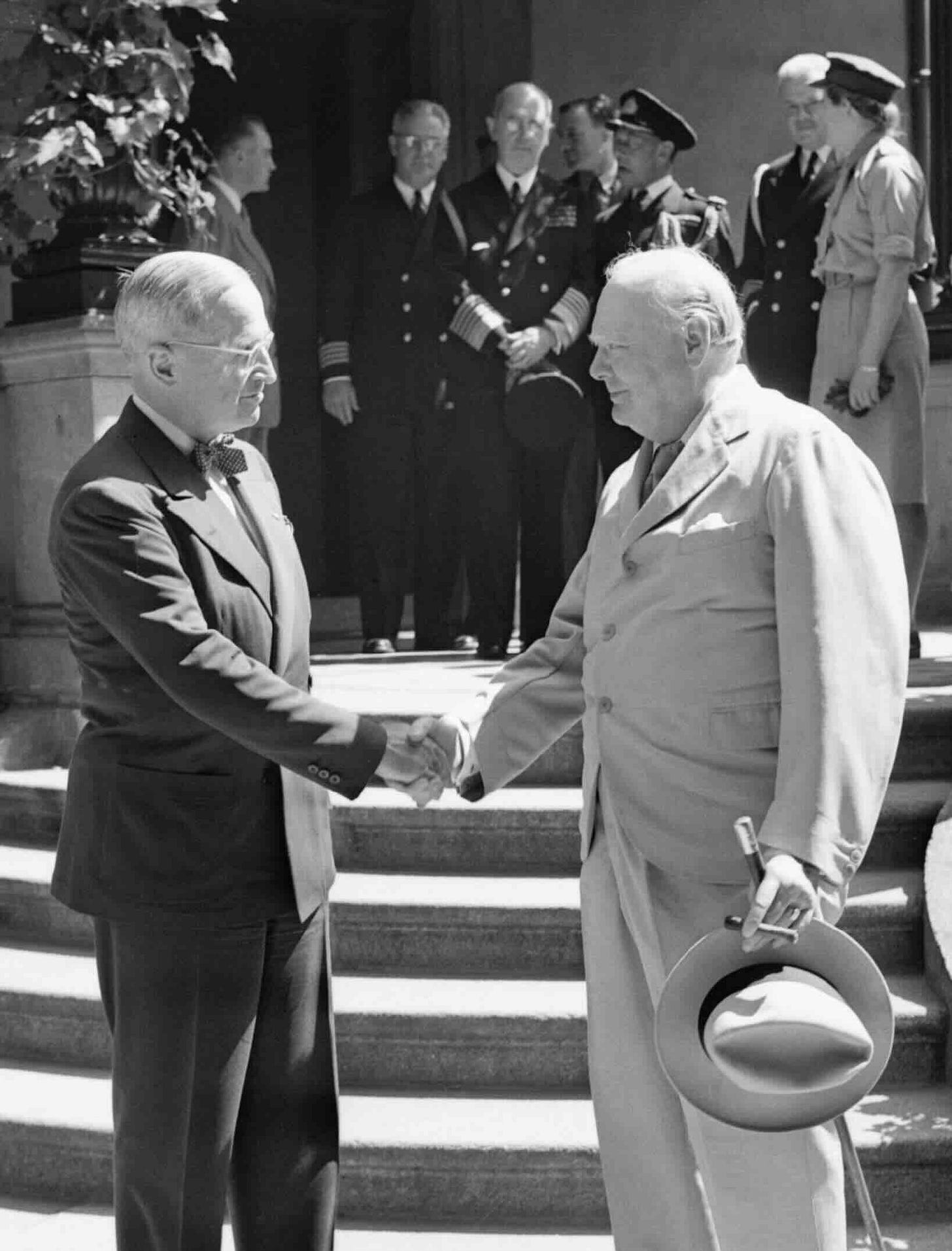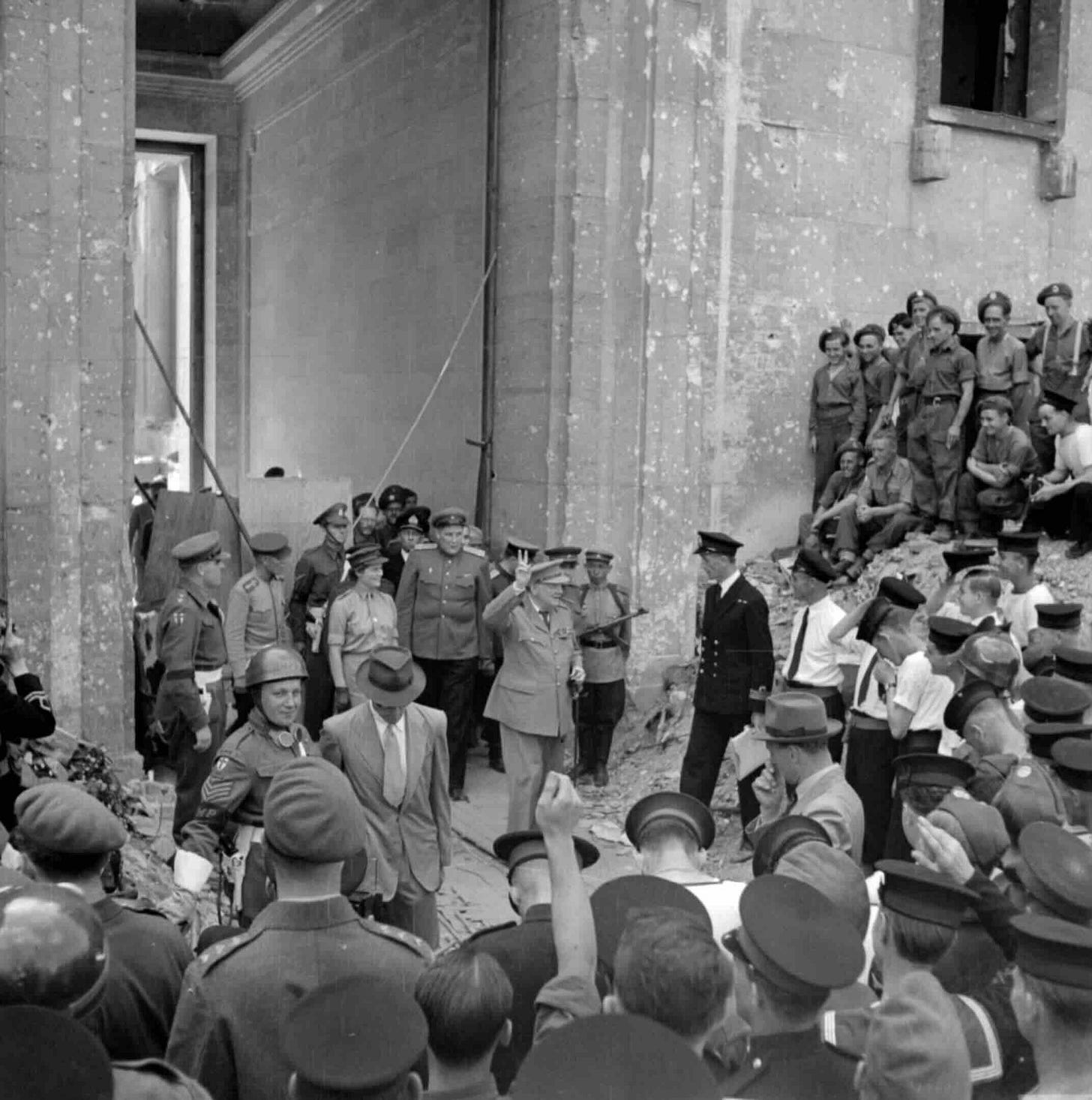Trinity and Potsdam
16th July 1945: Developments in science and on the world stage mark not just a changing world order, but a new paradigm

For a few posts, collected together for clarity, we return to 1945 …
Brigadier General Thomas F. Farrell1 was at the control shelter located 10,000 yards south of the point of explosion.
The scene inside the shelter was dramatic beyond words. In and around the shelter were some twenty-odd people concerned with last minute arrangements prior to firing the shot. Included were: Dr. Oppenheimer, the Director who had borne the great scientific burden of developing the weapon from the raw materials made in Tennessee and Washington and a dozen of his key assistants…
…
Everyone in that room knew the awful potentialities of the thing that they thought was about to happen. The scientists felt that their figuring must be right and that the bomb had to go off but there was in everyone’s mind a strong measure of doubt. The feeling of many could be expressed by ‘Lord, I believe; help Thou mine unbelief.’ We were reaching into the unknown and we did not know what might come of it. It can be safely said that most of those present—Christian, Jew and Atheist—were praying and praying harder than they had ever prayed before. If the shot were successful, it was a justification of the several years of intensive effort of tens of thousands of people—statesmen, scientists, engineers, manufacturers, soldiers, and many others in every walk of life.
“In that brief instant in the remote New Mexico desert the tremendous effort of the brains and brawn of all these people came suddenly and startlingly to the fullest fruition. Dr. Oppenheimer, on whom had rested a very heavy burden, grew tenser as the last seconds ticked off. He scarcely breathed. He held on to a post to steady himself. For the last few seconds, he stared directly ahead and then when the announcer shouted ‘Now!’ and there came this tremendous burst of light followed shortly thereafter by the deep growling roar of the explosion, his face relaxed into an expression of tremendous relief. Several of the observers standing back of the shelter to watch the lighting effects were knocked flat by the blast.
… a clarity and beauty that cannot be described but must be seen to be imagined.
“The tension in the room let up and all started congratulating each other. Everyone sensed ‘This is it!’ No matter what might happen now all knew that the impossible scientific job had been done. Atomic fission would no longer be hidden in the cloisters of the theoretical physicists’ dreams. It was almost full grown at birth. It was a great new force to be used for good or for evil. There was a feeling in that shelter that those concerned with its nativity should dedicate their lives to the mission that it would always be used for good and never for evil.
….
The effects could well be called unprecedented, magnificent, beautiful, stupendous and terrifying. No man-made phenomenon of such tremendous power had ever occurred before. The lighting effects beggared description. The whole country was lighted by a searing light with the intensity many times that of the midday sun. It was golden, purple, violet, gray and blue. It lighted every peak, crevasse and ridge of the nearby mountain range with a clarity and beauty that cannot be described but must be seen to be imagined. It was that beauty the great poets dream about but describe most poorly and inadequately.
Thirty seconds after the explosion came first, the air blast pressing hard against the people and things, to be followed almost immediately by the strong, sustained, awesome roar which warned of doomsday and made us feel that we puny things were blasphemous to dare tamper with the forces heretofore reserved to The Almighty. Words are inadequate tools for the job of acquainting those not present with the physical, mental and psychological effects. It had to be witnessed to be realized.”

The 'Big Three', Roosevelt, Churchill and Stalin had been the face of the Allies for the greater part of the war, meeting in several high profile conferences to decide the course of the war. Now President Truman replaced the recently deceased Roosevelt in the line up for the last conference at Potsdam near Berlin in Germany.
The tensions between the Soviet side and the western democracies were now becoming ever more evident. On the face of it the conference would decide the fate of Germany and the where the new boundaries of eastern Europe would lie. In reality much would be determined by the occupation of territory by Soviet troops.


